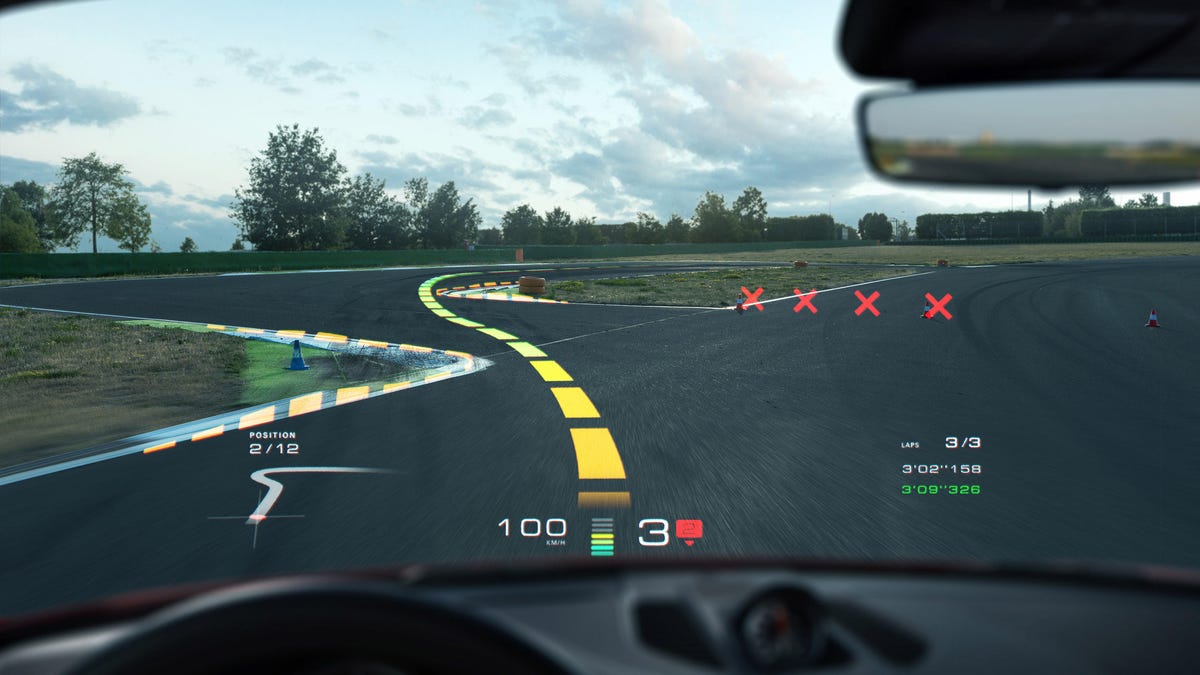Porsche, Hyundai invest in WayRay to make augmented-reality HUDs
It's unlike any head-up display out there today.
One day, your Porsche or Hyundai might have a windshield that could make you a better driver.
WayRay, which aims to bring its augmented-reality windshield tech to production vehicles, announced today that it secured $80 million in funding. Porsche led the funding round, but it also included other automotive companies like Hyundai and JVCKenwood. WayRay has raised more than $100 million since it was created in 2012.
WayRay's tech goes beyond any head-up display you'd find in a current production vehicle. Whereas traditional head-up displays offer static images of information like the speed limit or blind-spot monitoring, WayRay throws in a dash of augmented reality. It can keep track of pedestrian crossings or other road markings and emphasize their importance to the driver in real time. Heck, it might even find you a parking spot.
It also has performance applications. On the track, for instance, WayRay's AR tech could display a live driving line, offering up hints on when to brake and when to start turning in. WayRay's video mockup even shows a "ghost" car carving out the driving line ahead of the driver. Driving instructors? Who needs 'em!
WayRay claims that its augmented-reality tech "can be installed in almost any car model," thanks to its small projector, which has a wide field of projection that could allow both the driver and the passenger to see the tech at work. It's likely years away from production, but this new round of funding helps bring WayRay's tech one step closer to reality.


